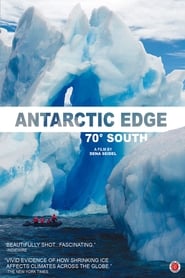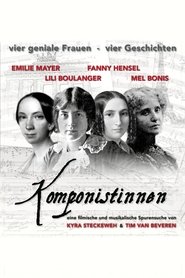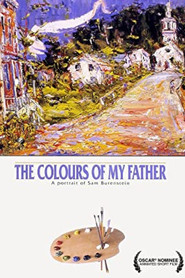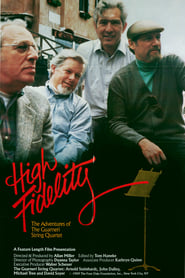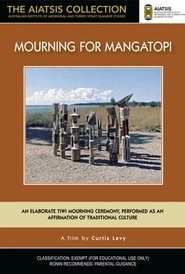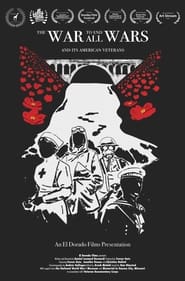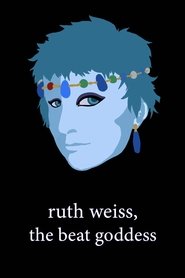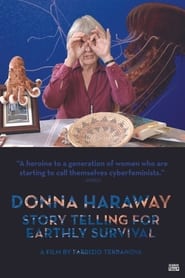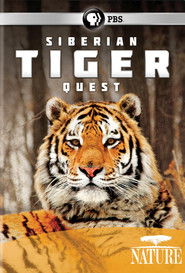Popular Documentary Movies on Kanopy - Page 245
-
Lili
2020
Lili
2020
A young mother flees her country in the midst of a revolution, revealing to her daughter a history of abandonment that crosses three continents and four generations. -
Antarctic Edge: 70° South
2015
star 7In 2014, scientists declared West Antarctic ice sheet melt unstoppable, threatening the future of our planet. A group of world-class researchers is in a race to understand climate change in the fastest winter-warming place on earth: the West Antarctic Peninsula. Trekking through dangerous and uncharted landscape, these scientists push the limits of their research and come to terms with the sacrifices necessary to understand this rapidly changing world. -
Duty of Care: The Climate Trials
2022
A documentary following Dutch lawyer Roger Cox as he attempts to make global legal history by establishing that governments and Big Oil have a duty of care to prevent catastrophic climate change. -
Gimme a Faith
2018
Gimme a Faith
2018
Evangelical Christians in the Bible Belt try to convert newly arrived Chinese international students. -
The Passionate Industry: Australian Cinema 1920-1930
1971
Part 2 of the History of Australian Cinema series. Covering the 1920s and 30s. From an origin that promised so much, the Australian film production industry faced new challenges from abroad which ultimately proved to be more than they could cope with. Unfortunately very few films from then now survive. -
Bonhoeffer
2003
Bonhoeffer
2003
star 6Dramatic documentary about the young German pacifist and theologian Dietrich Bonhoeffer who resisted the Nazi regime and was hanged two weeks before World War II was over. -
Women Composers
2018
Women Composers
2018
When Leipzig pianist Kyra Steckeweh realized that her repertoire almost exclusively consisted of music composed by men, she began searching for pieces written by female composers. Her research in archives, libraries, and publishing houses quickly brought to light a variety of remarkable piano pieces that have been buried in history and rarely performed. -
The Colours of My Father: A Portrait of Sam Borenstein
1992
star 6.5The Colours of My Father: A Portrait of Sam Borenstein is a 1992 short animated documentary directed by Joyce Borenstein about her father, the Canadian painter Sam Borenstein. It was nominated for an Academy Award for Best Documentary Short. In Canada, it was named best short documentary at the 12th Genie Awards. -
High Fidelity: The Adventures of the Guarneri String Quartet
1989
Relationships, rehearsals, performances, hobbies, and family life of the members of the Guarneri String Quartet. -
Oleg's Choice
2016
Oleg's Choice
2016
Fighting in eastern Ukraine broke out in early 2014. Since the summer, thousands of young Russians, driven by television propaganda and a thirst for adventure, began to pour in. Among these volunteers were Oleg and Max. Oleg became a battalion commander and Max remained an ordinary soldier. While they prepare to fight, they discuss their motivations and share their own perspective on the conflict. The image becomes a unique personal testimony of one side of the war, one rarely seen in the western media. -
Mourning For Mangatopi
1974
Because of work commitments and the influence of Christian Missions, traditional mourning ceremonies among the Tiwi people of Melville Island were becoming rare at the time of making this film (1974). The full, elaborate ceremony, called the Pukumani ceremony, lasted several days and involved large numbers of people in ritual roles. It was performed here with full awareness that this may be one of the last times such a ceremony would be staged in the traditional way. The ceremony was prepared by the Mangatopi family of Snake Bay after the death of a 35-year old family member killed by his wife. The dead man’s father, Geoffrey Mangatopi, and his family requested this film to be made as a public record of a disappearing tradition. Unique to the Tiwi people of Melville and Bathurst islands, the Pukumani ceremony was not only performed to safe-guard the passage of the dead person into the spirit world, but to re-affirm kinship relationships and traditional Tiwi culture. -
Táncrend
2003
Táncrend
2003
Once a week, the dance teacher rolls into a small Hungarian village at the end of the world in his yellow Citroën and, like a magician, gives lessons to women and men: how to rise elegantly into the air and fly to the melody of the music. The film is about how the blue bird of happiness flutters around us here. -
The War to End all Wars... and its American Veterans
2020
Relying on newly discovered archival footage, memoirs from the fallen, and expert commentary from scholars, this documentary tells the story of World War I from the American perspective: Its ace pilots, mine-laying Sailors, heroic doughboys, Harlem Hell Fighters, and courageous nurses. -
The Hidden Art of Islam
2012
Explore the tradition of figurative art at the heart of Islam with host Rageh Omaar. Muslim belief and tradition specifies that there should be no depictions of God or the Prophet Muhammad. In religious contexts, this constraint on what artists can depict extends to human figures and other living creatures as well. These prohibitions have inspired a rich visual culture based on calligraphy, Arabesque floral designs, and geometry, all of which feature strongly in the art and design found throughout Islam, including in mosques and the Koran. With the help of fine art and religion experts, host Rageh Omaar (The Life of Muhammad) traces the effect of these beliefs over the centuries on the art and artists of the Islamic world and considers why depictions of pilgrims taking part in the Hajj pilgrimage have become part of the accepted tradition of Islamic art, including in work exhibited at the British Museum. -
How to Die in Oregon
2011
How to Die in Oregon
2011
star 8In 1994 Oregon became the first state to legalize physician-assisted suicide. At the time, only Belgium, Switzerland, and the Netherlands had legalized the practice. 'How to Die in Oregon' tell the stories of those most intimately involved with the practice today -- terminally ill Oregonians, their families, doctors, and friends -- as well as the passage of an assisted suicide law in Washington State. -
Art House
2016
Art House
2016
The film reveals the inventiveness derived from the dialogue between each artist's practice and the construction of their handmade homes. The results range from the romantic (Hudson River School painter Frederic Church's Olana, framing views of the Catskills to echo his paintings), to the futuristic (Urbanist Paolo Soleri's silt-casted structure Cosanti growing out of experiments in bell making in the Arizona desert). Commentary from cultural critic Alastair Gordon and an original score by Jamie Rudolph help to evoke the spiritual dimension of the locations and argue the case that the intuitive vision of artists can create great architecture. -
Art in an Age of Mass Culture
1991
Art in an Age of Mass Culture pulls back the curtain and takes a look at the cultural climate surrounding MoMA's now famed exhibition, "High and Low: High Art and Popular Culture". Opening in the fall of 1990, the show placed a spotlight on the rapid merging of consumerism and the artistic avant-garde. Curated by Kirk Varnedoe and Adam Gopnik and featuring work from artists such as Jeff Koons and Roy Lichtenstein, "High and Low" ignites conversations of mass culture and our society's ever-changing relationship with the arts. -
ruth weiss, the beat goddess
2019
In a life that has spanned 92 creative years, ruth weiss is one of the most influential writers of the Beat Generation. Born to a Jewish family during the rise of Nazism, as a 10-year-old refugee, she escaped to the United States. ruth became a Jazz troubadour exemplifying the zeitgeist of Chicago, New Orleans, and San Francisco. The film further highlights ruth weiss' electrifying and intimate poetry with breathtaking images of exquisite modern dance, art, animation, and music to embody her oeuvre. This film documents not only weiss' gift to humanity but archives significant historical moments in our world's social and literary movements. As a contemporary of Lawrence Ferlinghetti and Jack Kerouac, she innovated poetry to jazz. -
Donna Haraway: Story Telling for Earthly Survival
2016
star 6.2In Fabrizio Terranova’s film, Donna Haraway – an original thinker and activist, one of the founders of cyberfeminism and the author of A Cyborg Manifesto, which proposed a number of innovative theories about the existence of scientific knowledge – calls for the abandonment of the idea of human exceptionalism and for a conception of the world as complex web of interconnections between people, animals and machines. Jellyfish can be seen flying around her home while she discusses the stories that are necessary for Earth’s preservation and reads her fantastic tale of the art of survival on a broken planet, and of fusion and care between the species. -
Siberian Tiger Quest
2012
Siberian Tiger Quest
2012
Embark with conservation ecologist Chris Morgan on a great challenge: to find and film the Siberian tiger.
 Netflix
Netflix
 Amazon Prime Video
Amazon Prime Video
 Apple iTunes
Apple iTunes
 Apple TV Plus
Apple TV Plus
 Disney Plus
Disney Plus
 Google Play Movies
Google Play Movies
 Paramount Plus
Paramount Plus
 Hulu
Hulu
 HBO Max
HBO Max
 YouTube
YouTube
 fuboTV
fuboTV
 Peacock
Peacock
 Peacock Premium
Peacock Premium
 Amazon Video
Amazon Video
 The Roku Channel
The Roku Channel
 AMC+
AMC+
 Kocowa
Kocowa
 Hoopla
Hoopla
 The CW
The CW
 Vudu
Vudu
 Starz
Starz
 Showtime
Showtime
 PBS
PBS
 Pantaflix
Pantaflix
 FXNow
FXNow
 Tubi TV
Tubi TV
 Kanopy
Kanopy
 Comedy Central
Comedy Central
 Crunchyroll
Crunchyroll
 Microsoft Store
Microsoft Store
 Redbox
Redbox
 Sun Nxt
Sun Nxt
 ABC
ABC
 DIRECTV
DIRECTV
 Crackle
Crackle
 Fandor
Fandor
 Plex
Plex

